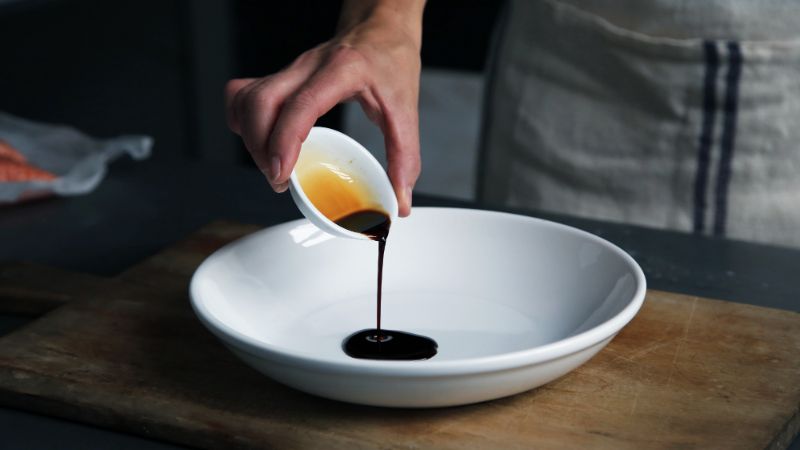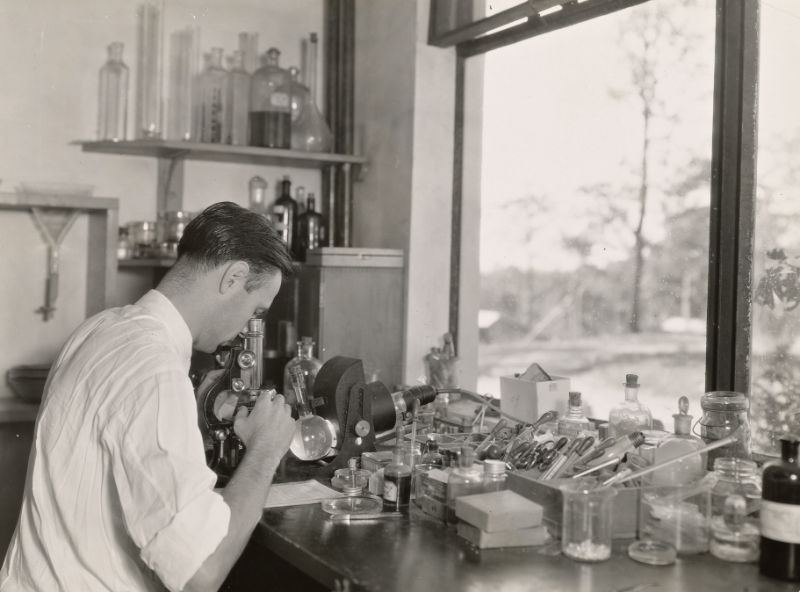Let’s make a promise to each other. Me, the writer, to you, the soon-to-be micro-influencer.
I will promise you that this guide will not be a basic one, where we give shoddy advice on how to grow your audience like:
Those are all useful pieces of information… but are they? If you’re like us, you’ve seen them and while they do tell you something, they beat around the bush — I’ve never finished one of these articles saying “now I just know for sure what I need”.
So we’re reapproaching it.
We’ll do our best to tell you techniques that actually work for building an audience of +10,000 followers— yes, even if you don’t know what your area of interest will be.
Let’s jump into it.
You will want to think of the “creative juice” metaphor literally — think of it as if you’ve got a liquid that you need to pour. Let’s imagine you’ve got two choices:
Doing #1 would spread the liquid too thin — it might even be that there will not be enough liquid to cover the whole area and the effort might have been for nothing.

Doing #2 will mean that the effort will be more focused — it won’t be as wide as a bowl, but neither will you want to do that. It makes sense why it’s significantly more useful to fill up the glass, rather than the wide bowl.
What is the meaning of this metaphor?
The bowl and the glass are your possible audiences. The juice represents your efforts.
Choosing to fill up the bowl is what most of the people choose to do.
In this case, it means people decide to become “food influencers” or “sports influencers” — something which is very general and wide (as wide as the bowl they can fill up).
What’s the problem with that?
It won’t be effective. Again, it’s likely that the effort will not be worth anything. Yet it’s the intuitive way, because you want to, one day, become a big one. But most people are doing that and most people… don’t become influencers.
Doing the counterintuitive thing. Which, in this case, is choosing to fill up a very narrow glass. In direct terms, it means choosing:
It will 100% be against your instincts to narrow down, but think about it this way:
On one hand, you can start pursuing your big target from 0.
On the other hand, you can start pursuing your big target in a year, and with a head-start of 50k followers that are very narrowed.
It’s very likely that your audience will grow faster with the narrow niche — and that in itself gives you an unbeatable advantage when you choose to shift to a bigger audience.
For a vegan keto blog with 50k readers to mature into a vegan nutrition blog (so more than just keto) is tremendously easier than for a person to start a vegan nutrition blog today.
Conclusion: everyone wants to become an influencer from the get-go. You can become a micro-influencer first, then evolve into a proper influencer. You’ll have a head-start that’s unbeatable.

The answer can be summed up this way:
Don’t look for ideas. Rather, look for problems.
Think about two types of influencers: those that became influencers by accident (and we’ll debunk in a second why it’s not a pink as it looks to become that), and those who sat down, thought of an idea and decided to pursue that.
Those aren’t the only two types of influencers, but bear with me as I’m trying to convey my idea.
People who’ve become influencers by accident did so because they solved a problem — they clearly didn’t think of an idea. The might have envisioned it at one point but that’s about it.
Now, here’s why you don’t want to sit down and think of an idea: if you do that, you will risk becoming too attached to it. Becoming attached means you find it hard to let go of your idea, since you’ve spent all this time developing it (planning, thinking of how it will go, thinking of how you’ll introduce yourself to people etc. etc.).
The only impediment is: how do you know if an idea is good?
You go out and see if your idea solves a problem. If your idea does solve a problem, then you’ve hit jackpot — people actually need an influencer that creates infographics for ketogenic diet vegans (to pick a random example).
But what if it doesn’t? Since you’re attached, you’ll find it harder to let go of it.
Now let’s say you find a problem.
Better yet, maybe the problem is actually yours. I can speak from experience in this case: I had a problem when I was reselling high-end designer/streetwear sneakers and clothes. The problem I found was: there wasn’t any reliable source that was showing me the difference between fake (counterfeit) and authentic sneakers. I looked and looked and looked, but I only found:
I thought someone must have done it properly (problem). Then I asked myself what did properly mean.
My answer was: a library, with a search function, where you’d pick your item and a guide would be shown to you on how to spot the fake version of this item (an idea). This was my idea — was it good? I didn’t know, so I put it out (this happens over the course of months, by the way).
Without going into detail as this is not what the post is about, the library of fake vs real comparison guides grew from 0 to 200,000 users in its first year and all the way up to 1M users in its second year.
What I’m trying to get at is this: I found a problem and I was attached to the problem, not to the idea. If the “library” idea did not work, I’d have easily switched the way of approaching the problem, since I knew what the problem is.
And maybe that doesn’t tell you that much. Let’s give an example of “the problem was found, but the solution wasn’t good”.
In the last months, we’ve been studying the possibility of making a robot that would tell between fake and real sneakers, based on our guides. The only impediment? It’s not as easy to make this as it is to make a website and write guides.
Therefore, if I’d have sat down and come up with an idea of “Let’s make a robot that can authenticate sneakers”, maybe I would have spent two years on it without a strong result and probably I would still be researching, in this moment, a way of doing this robot.
Conclusion: Don’t look for ideas, look for problems. Your audience will grow when you know what you want to solve since you can switch the “solution” or the “idea” if it doesn’t work. Sooner or later, you will find a solution to a problem if you know the problem.
Let’s say you found a problem and some possible ideas. Now what do you do?
To sum it up: you have to put your “lab coat” on. You need to act as if someone has started paying you to learn new things and maybe every now and then discover new things. Let me explain.

Tell me if this sounds familiar: person X decides they want to be an influencer.
Person X decides what kind of influencer they’d want to be and starts playing the act.
This person starts acting as if they’re an expert as if they’ve been doing this for a multitude of years and as if they would know everything about this subject.
The only problem? Some people can see “through” the act and it looks ingenuine. Why? This person has got no body of proof to stand for its claims of expertise.
It’s very easy to fall into becoming this when it looks like it’s the only way. It’s also very easy to start incorporating aspects of it, but not the full “act”, in an effort to make you look more established.
There is, however, a better way. When I say put your lab coat on, what I mean is act like a scientist. Scientists are paid to learn stuff and every now and then, they might (or might not) discover something new.
What this means in practical terms: if you pick up on a subject, you don’t have to “fake it ’til you make it”. All you need to do is:
Job done — no ingenuine behaviour this way and you actually get to learn things (and share them with the world). Feel like this is cheating or not original? Let’s discuss that as well.
Conclusion: Act like a scientist, not like a shady “guru”. Show people what you’re learning so that one day you will have the indubitable body of work that shows why you can charge $100,000 for a post. Plus… you know… you’re actually learning!
You don’t need to reinvent the wheel.
Creative people (and most successful influencers are creative without a doubt) have this natural tendency to feel like unless they innovate out of thin air, they are imitating something that already exists.
We need to have this discussion more often. It’s something we’ve covered in one of our Instagram infographics — make sure you follow us to see bite-sized bits of wisdom for influencers:
As you’ve seen in the Instagram post above, even Steve Jobs, one of the most creative people that ever lived, has addressed this feeling. It feels like guilt to take a concept that already exists (e.g. a smoothie recipe guide Instagram account) and add a personal twist to it (make the same thing, but for vegan people and on TikTok, not on Instagram).
Don’t be afraid to draw inspiration — it’s not the same as imitation, even though they sound about the same.
Imitation means a 100% blatant copy. Drawing inspiration implies that you’re taking elements out of an already-existing concept and adding your personal findings to it.
Do that multiple times (draw inspiration and add your twist to it without feeling guilty about it), and you will notice one thing: your creations will be more and more original and unique.
Think of it as training wheels at the beginning of the process of learning how to ride a bike.
Besides, most of the glorious items we use are glorious not because they were invented out of thin air, but because they perfected something that was already existing.
Conclusion: 100% copying is not cool. But drawing inspiration and building on top of it is more than cool — it’s what allows you to create.
We need to talk about another important pillar that will be part of how you will become a micro-influencer: motivation.
Here’s the deal: you will aim for big strides. You will aim at:
The hard truth is that all these take time to happen, and you know that. Those are macro wins.
The big question, then, becomes how do you make sure you can keep on going on the daily? How can you be able to keep pushing every day when these milestones are achieved every few months/years?
Here’s the answer: make sure you’re having micro-wins at least every few days.
Micro-wins are small-level tasks that you can do daily (or every few days) which will enable you to reach those big goals. This is why people use to-do lists: every “check” is a micro-win.
You don’t have to use to-do lists if you don’t feel like it, but make sure you have something to look forward to every day — some small things that are part of the bigger goal.
Otherwise, you will feel lost every now and then. Here are some suggestions for what might be your micro-win:
By ticking these things, you know you’re doing your best now so that in a future moment you will have reached your targets. Those micro-wins keep you going.
Conclusion: Make sure you micro-win on the daily (or every few days). Everything becomes easier to sustain this way.
There’s nothing worse than wasting potential.

And somehow, all humans have this detector inside of them. It’s what makes us feel bad when we haven’t been productive in a long time — or when we’re “not doing anything with our life”.
However, waste of potential might come not only in the shape of “not good enough”. It can also come in the shape of “good at too many things”.
It might not make sense now, at the beginning of your journey, but please keep in mind these words.
Once you start trying numerous ideas and problems, audiences, techniques, strategies etc (i.e. tasting), you will likely find yourself in a position where some of them might work. In other words, because you’re trying many things, multiple tests will look like they could work.
Don’t get me wrong — if something clearly works for you, you will naturally do that. The devil is in the details, however. It’s the multitude of things that “might” work — the uncertainty besides a multitude of doors.
Much like point #1 in this list, it’s human tendency to try and spread yourself so that you “cash in” on all these opportunities that have opened to you. Once again, it’s all about focus. Why? The exact same concept applies: it’s easier to be the best in a second area, once you’ve mastered being the best in one (smaller) area.
Focus is what allowed the people that we look up to to become truly great.
Think about it this way: at every step of this journey, some people (most people!) fail. The purpose of this article is for you to keep on coming back to it so that you don’t fall short on any of these points.
Once you realize that people get to this point where they’ve got multiple opportunities, but they fall short here, it all makes more sense.
In practical terms: if you’ve tried the following niches:
And you’re starting to see traction from three out of these four, double down on one of them.
No, you won’t be able to catch them all. Or you might, but the way in which you’ll capture three of them will be less than what you could have had if you went only for one.
However, be careful: I’m not saying you should never ever try something else again — in fact I believe you should always try new things within your influencer career.
Maybe a 95% focus and a 5% dedication to exploring new things is your ratio. Maybe it’s 80% and 20%. Up to you! You’ll find your own pace, but keep in mind the value of long-term thinking.
Conclusion: Don’t try to chase two rabbits — you will not catch either one. Once you see something that’s working, double down on one thing.
This is partly why we’re building the Social Podium Academy: we want to enable more people to earn comfortably from their influencing careers. For you to become a micro-influencer, you need to present yourself in the best possible way.
We’re building Social Podium, a search engine for influencers which brands will use to find you.
This way, they will find you and initiate the collaboration process by offering you freebies or paid collaborations for posts/stories etc.
Before Social Podium, we will be releasing a suite of tools that will enable influencers to have better, bigger and better-paid collaborations with brands. Our first tool is MyPodium — your personal website that will help you not only connect better to your audience, but also with brands.

If you’ve got more than 2500 followers on Instagram, MyPodium is free — you can sign up now and start building your website in seconds. Have a look at the 15 templates we’ve designed for your future personal website!
Why are we mentioning this? Not only is it free, so there’s no risk at all for you, but we’ve built MyPodium around two things:
MyPodium was built in constant communication with brands, so all the features are addressing repetitive questions that brands ask influencers before initiating a partnership.
Conclusion: Build your MyPodium page — it’s your personal website that you can place in your bio. It will give you an edge over other influencers.
As much as it’s hard to imagine now, at the beginning of the road, we hope you’ll one day feel this: the feeling of not having to always keep track of your current number of followers.
If you do all the other seven things we’ve mentioned, you’ll be closer and closer to internal success — external success might come (e.g. a high number of followers), but as a dessert: a plus to the main dish you’re having anyway.
Let’s break down these steps to see why they would enable you to get to a point where the number of followers is not what you’re tracking:
All these things are part of what you can control — they dictate your internal state of mind.
The things we’ve been putting in contrast, such as following the number of followers, pretending to be an expert, etc? Those are external and you can’t control them. At worst, they control you (and your internal state of mind).